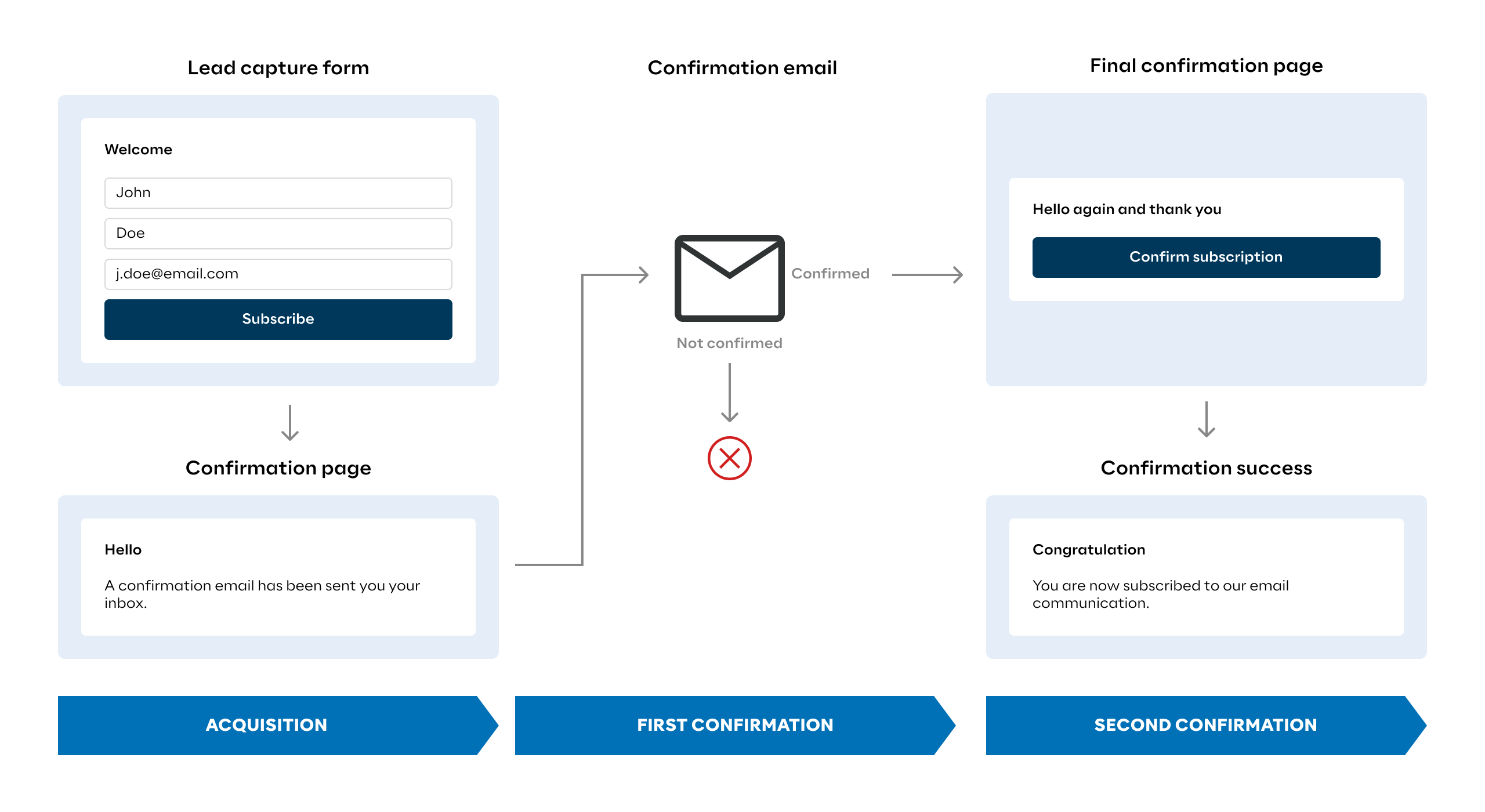Double opt-in, also known as confirmed opt-in, is a method used in email marketing to ensure that subscribers have explicitly given their consent to receive emails from a sender. This process involves two steps:
- Initial Subscription: A user expresses interest in receiving emails by signing up or subscribing through a website, a form, or another method. However, at this stage, they are not added to the mailing list.
- Confirmation: After the initial subscription, the user receives a confirmation email asking them to verify their intent to join the mailing list. This typically includes a link or button that the user must click to confirm their subscription. Only after this confirmation is received are they added to the mailing list.

Here are the advantages and legal requirements of double opt-in for email marketing:
- Explicit Consent: Double opt-in ensures that subscribers genuinely want to receive emails from your organization. It reduces the likelihood of adding invalid or unwilling email addresses to your list.
- Reduced Spam Complaints: Since users must confirm their subscription, they are less likely to mark your emails as spam. This helps maintain your sender reputation and deliverability rates.
- Accurate Email Lists: With double opt-in, you have a cleaner and more accurate email list, which means you can better target your audience and tailor your content.
- Legal Compliance: Many countries have strict regulations regarding email marketing, such as the General Data Protection Regulation (GDPR) in the European Union and the CAN-SPAM Act in the United States. Double opt-in helps you comply with these regulations by demonstrating explicit consent.
- Proof of Consent: In case of legal disputes or challenges related to consent, you have a clear record of the subscriber’s confirmation, which can serve as proof of their intent to subscribe.
Double opt-in is not a legal requirement in itself, but it aligns with the fundamental requirement of obtaining consent for email marketing.
Legal Requirements:
- Consent: Double opt-in is not a legal requirement in itself, but it aligns with the fundamental requirement of obtaining consent for email marketing. Under laws like GDPR and CAN-SPAM, you must have clear and unambiguous consent from individuals before sending them marketing emails. Double opt-in is a robust way to obtain and document this consent.
- Unsubscribe Mechanism: Regardless of whether you use single opt-in or double opt-in, you must provide an easy way for subscribers to opt out of future emails. This is usually done through an unsubscribe link in each email.
- Identification: Your emails must clearly identify your organization and include valid contact information.
- Honor Opt-Out Requests: If a subscriber opts out (unsubscribes), you must promptly honor their request and stop sending them marketing emails.
Data Protection: You should handle subscriber data responsibly, ensuring its security and compliance with data protection regulations.
In summary, double opt-in is a best practice in email marketing for ensuring consent, reducing spam complaints, and maintaining a clean and engaged subscriber list. While it’s not a strict legal requirement on its own, it helps you meet the legal requirements related to consent and email marketing regulations. Always be aware of and comply with the specific email marketing laws in your jurisdiction and those of your subscribers.
Related articles
Marketing Automation with Like Reply
Like Reply is a specialized expert in digital communication with offices in Munich, Milan and Paris. We support companies in the introduction and development of automated communication as well as in the systematic, effective management of leads and customer relationships. Contact us without obligation and find out how we can take the use of Marketing Automation to the next level together.

